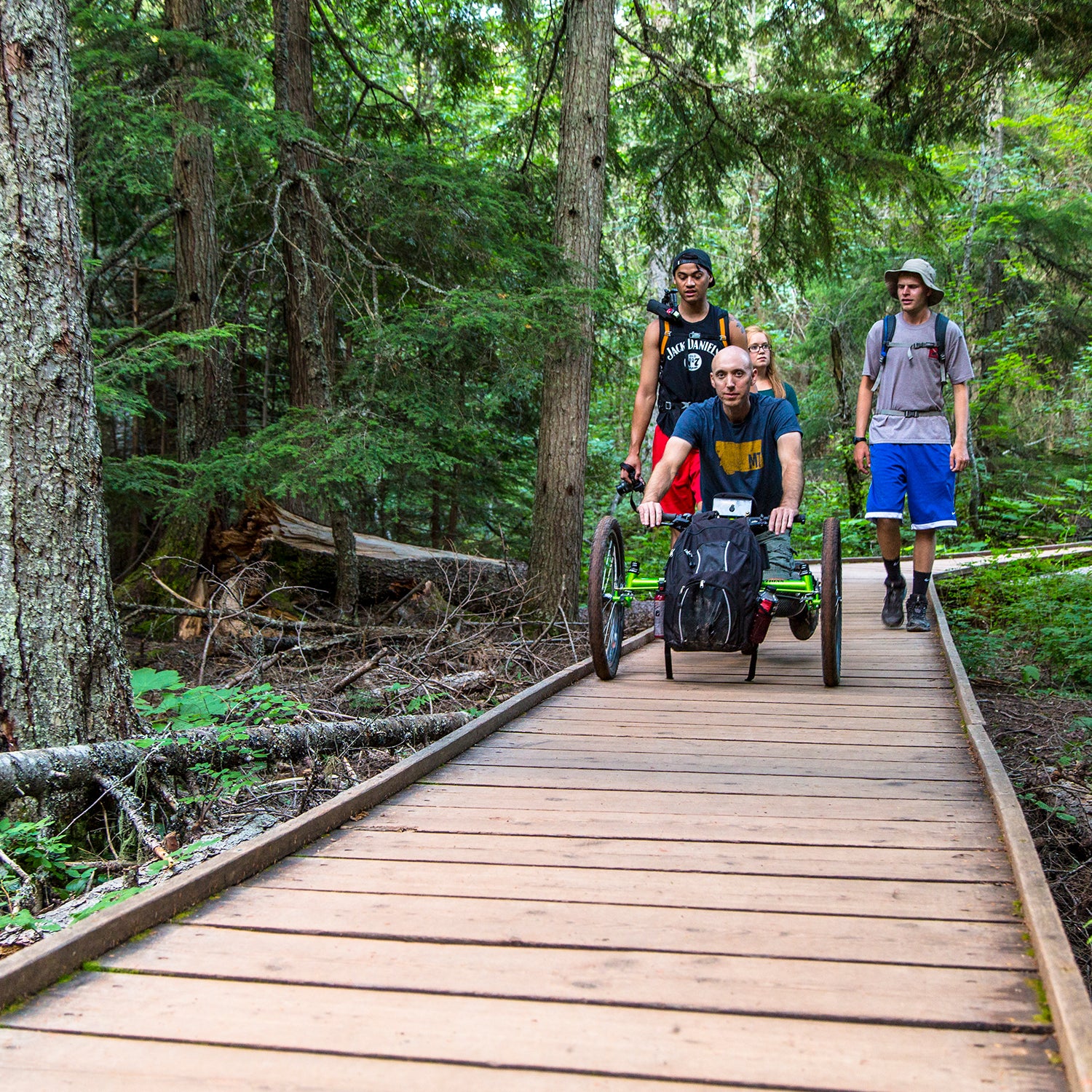When planning a trip to a U.S. national park, most people focus on which trail or campground they want to see. But for those living with disabilities, the picture is a little more complicated. There’s accessibility to think about, not to mention whether there will be ramps, elevators, or decent sleep accommodations. In 2012, the National Park Service (NPS) formed the , which put in motion a five-year plan for improving disability access from by 2020. If you’re thinking about traveling anywhere, consider applying for an , which grants U.S. citizens and permanent residents a lifetime pass to more than 2,000 federal recreation sites across the country. The pass itself is free (though there is a $10 processing fee) and includes any visits to national parks, national wildlife refuges, and national forests, and when used at certain sites, can include discounts on . Want to narrow down the list? Here are five parks that provide easy access to some of our country’s best places.
Acadia National Park, Maine
This national park may be covered with rocky beaches and granite peaks, but that doesn’t mean it’s inaccessible. For starters, there are that connect the park with neighboring villages, all of which are handicap-friendly. And many of the museums, picnic areas, and campgrounds have accessible sites. Even the beaches—including Echo Lake, Sand Beach, and Ike’s Point—, be it parking for those who have wheelchairs, a path to the water, a boat launch area, or ranger-led boat cruises.
Some of the best paths in the park also allow for wheelchair use. Jesup Path has a boardwalk that flows through a white birch forest, and Thunder Hole has a ramp from the Park Loop Road that leads to the main viewing area. Even Cadillac Mountain—the highest point on the East Coast—has a short trail to vistas of Frenchman Bay and the Porcupine Islands. If you want to get close to wildlife, has two wheelchair-accessible horse-drawn carriages that can take you through various areas of the park.
Great Sand Dunes National Park and Preserve, Colorado
The words “sand dunes” and “wheelchair” usually don’t mix well. But here you can with large, inflatable wheels. Both child and adult sizes are available, though you’ll need someone to help push the wheelchair through the sand.
Great Sand Dunes also has accessible campsites, picnic areas, and a backcountry campsite at , and nearly all of its daily is accessible.
Grand Canyon National Park, Arizona
While many head down into Grand Canyon on its steep, rocky trails, some other options offer up pretty unbelievable views. The South Rim has wheelchair-accessible, barrier-free overlooks; wheelchairs can be checked out at the visitor centers, where you can also pick up a complimentary accessibility guide; and free ramp-equipped shuttles operate throughout the park. A , available at the entrance gates and visitor centers, also grants entry to some areas that are closed to regular traffic.
Don’t forget about tours: can accommodate special needs given advance notice, airplane and helicopter tours——fly over the canyon, and even multiday river trips are available. Various companies, like , have ramps they can add to motorized boats, wheelchair tracks made for sandy areas, and special hiking and toilet systems.
Glacier National Park, Montana
The idyllic sights in this national park—including mountain goats and grizzly bears—are worth the bit of extra planning it takes to find handicap-friendly viewpoints. To make it easier, the park offers free shuttles to various hot spots along the , including Jackson Glacier Overlook, Sun Point, and Rising Sun.
If you’re venturing without the help of the shuttle, there are a few other worth exploring: McDonald Falls has a paved route to the overlook; Logan Pass, the peak of the Going-to-the-Sun Road, has several paved trails and a visitor center; and Running Eagle Falls and Swiftcurrent Nature Trails are both short, stable-soil options. Of course, there are myriad accessible campgrounds, lodges, and visitor centers for your downtime, too.
Yellowstone National Park, Idaho, Montana, Wyoming
It’s one of the most iconic national parks in the United States, and while many of the century-old facilities are not up to accessibility standards, there are ways to make a Yellowstone trip memorable. Download the , which includes audio tours of popular sites, as well as up-to-date accessibility information for various trails and facilities within the park. From there, : Yellowstone has accessible fishing sites on the Madison River, Bridge Bay Marina and Grant Village have appropriate boating equipment, and most walkways and self-guided trails have at least one wheelchair-accessible option. Of course, you can’t go to Yellowstone without . You can borrow a wheelchair at the lodge, participate in ranger-led evening programs, and, obviously, head straight to the geyser and its accompanying basins.


